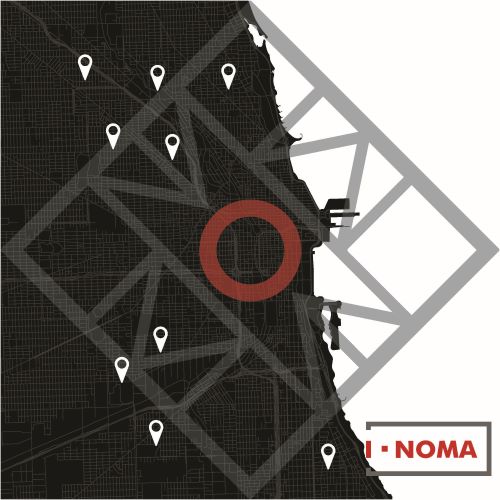I-NOMA president’s perspective
By Smitha C. Vasan, Assoc. AIA, NOMA
I am about to come to the close of my term as President of the Illinois chapter of the National Organization of Minority Architects (I-NOMA), and it’s been incredible. The past 18 months have felt more like 10 years of meeting people, sharing experiences, and expanding my horizons. The most memorable experiences I’ve had are rooted in the stories I have been told and in the one-on-one interactions I’ve had.
In creating a mission statement focused on community and legacy, the intention was to highlight and elevate the incredible depth we have with so many long-standing members local to Chicago who were integral in creating NOMA. In elevating their stories, we can inspire the community to continue to actively participate in our work. This mission also provided an active and pointed way for me to learn more about our organization’s history and purpose.
Two great outcomes of this mission are the creation of the I-NOMA Legacy Map, documenting the incredible contributions of minority architects in Illinois, as well as the I-NOMA Scholarship, to support young people from marginalized communities matriculating through design education. With these initiatives, we create long-standing documentation of and support for our members.

In recent times, this mission has shifted, along with my own understanding of NOMA. We recognize the acute need for accountability in today’s world and in today’s profession. This point is fundamental to NOMA’s purpose and to so much of the knowledge I’ve gained as I-NOMA president. NOMA creates space for marginalized individuals and groups, specifically racial minorities, to come together and feel recognized and safe to discuss these experiences without questioning, judgment, or a need for explanation. True allies must support the creation of this space, and subsequent necessary actions derived from it, within their organizations and outside them in order to have any semblance of impact or necessary compassion toward change.
I-NOMA has recently released our Professional Equity Checklist, which reflects the thoughts of our members on what changes they would like to see in the design and construction professions. There is a clear need for understanding the appearance of inequity and structural violence in a professional setting. Our checklist outlines first steps for candid self-evaluation in firms and organizations before they come to other organizations, such as I-NOMA, and ask, “What should we do?”
We live in a country that is systematically structured to marginalize racial minorities, specifically Black and Native people, for the benefit of the white majority, and that must change. In the professional context, this list outlines basic steps that can and must be taken before any statement or intention can be genuinely supportive.
When we think of diversity, we must consider that this term was initially trending in the United States as a more palatable way to address racism. Instead of calling out people and organizations for their racist practices, we instead ask that more diversity is created. So as we launch our committees and initiatives toward diversity, we must keep this critical piece at the forefront.
In truly understanding diversity, representation is critical. Yes, it is important that we have co-workers who look like us and who look different from us so that we can feel comfortable speaking up and learning. But it is also important that key decision-makers, not just overall leadership, reflect Black and Brown people, so that multiple perspectives are considered as culture is formed and reformed.

Finally, we cannot overlook the importance of communication in creating justice and equity. One thing I’ve learned in a big way throughout my term is that people avoid making trouble. Even if what’s being said hurts us, even if it annoys us, even if it is disrespectful and shortsighted, no one wants to be the one to create opposition. And it is perfectly understandable. For centuries, this type of unrest has been unheard and set aside. This type of treatment in the AIA is actually why NOMA was created.
So while it is certainly important that we, as minorities, begin to speak up more, it is far more important that we, as professionals in leadership, create a culture that actively seeks to identify wrongs where they are happening, that asks questions to start the uncomfortable conversations, and that appropriately makes decisions to incite change based on these conversations.
In reflecting on my own leadership, I am particularly impressed with the importance of creating awareness and normalcy around acknowledgment. There are numerous forms of marginalization within the professional sphere. Depending on background and experience, we may not identify with the gripes of another, but that does not make them any less important. We must place importance and validity in that which we cannot understand. As the work continues, as it always must and will with NOMA, I look forward to seeing space made and acceptance spread toward a more equitable profession.
Author Bio:
Smitha C. Vasan, Assoc. AIA, NOMA Vasan is an architectural designer at SmithGroup in Chicago. Vasan is also the 2019-2020 president of I-NOMA as part of her dedication to making design accessible.